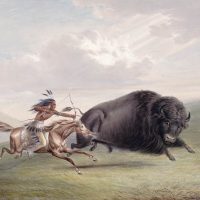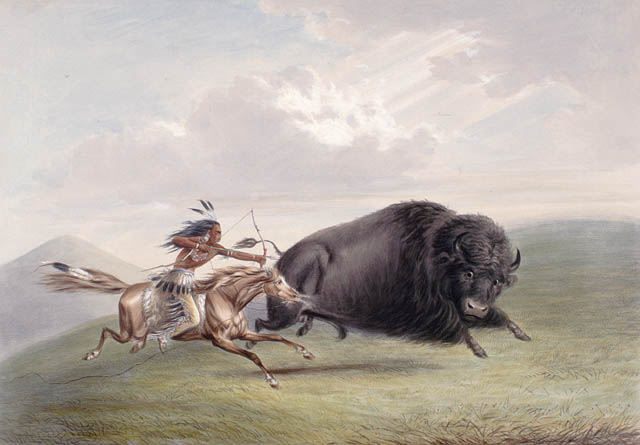Native American Foods: Eating and Gathering Habits Explored

Native Americans cover a vast people. Tribes would eat different food depending on their region. Alaskan tribes certainly had a different diet than tribes in the Amazon rainforest. Semi-nomadic tribes would enjoy a changing diet while others would rely on agriculture as their main source of food.
But, we do know a lot of the basics of Native American foods.
Gathering of Food
Supermarkets didn’t exist. Natives had to live a life of foraging and hunting if they hoped to survive. Eventually, domesticated animals were raised and killed, but this wasn’t as common of a practice as hunting, farming and gathering.
Hunting and fishing was a part of life.
Every tribe hunted and fished, and this was primarily a male role. The game that was hunted changed depending on the tribe with Native Americans often choosing to stalk:
- Deer
- Rabbit
- Squirrels
Anything was fair “game.” Other tribes were more ambitious, and they would follow larger animals, such as bison or caribou around. These tribes would send out numerous hunters that would work together to scare the animal in an ambush.
Sometimes, the animal would be led off of a cliff before the hunters finished them off and killed them.
 Traps were often laid to trap game, too.
Traps were often laid to trap game, too.
Fishing tribes used canoes, nets, traps and spear to kill marine life. Bows and arrows were also used as a mean of fishing along with harpoons and blow guns.
Gathering was often the job of the women, and this was an evolving practice. Farming allowed the women to have a much easier job than going out to gather food. The women would gather a lot of different items, including:
- Berries
- Fruits
- Roots
- Vegetables
Corn was a farming staple along with squash and beans which made up a large portion of the Cherokee diet. Corn recipes are very common among Native Americans, along with rice and eventually the inclusion of sugars.
Gathering didn’t just include blueberries, which was commonly gathered, too. Tools would also be used to gather maple syrup. Acorns were gathered to make flour.
Meat was fire-roasted and was the main component of Native American diets.
Collecting Water
Water is a vital life source for every culture and people. Collecting water was essential for life, as it is today, but tribes would build their lives around streams and rivers. The natives would be strategic when choosing where to live.
While the water sources may not be used in the same way today, they could provide the natives with water so clean that it could compare even to the most advanced household water systems today, like a water softener shower head packed with all the latest technology. You can find water of a similar quality in the natural environment and the tribes were good at finding it.
Tribes also knew where to find water and would remain cautious not to move too far from the nearest water source.
Water storage techniques were also incorporated into society. Clay pots would often be filled with water and stored to allow for easy access to water. Natives almost always chose to be at least within one day of a water supply.
Stone and mud walls would eventually be used extensively to direct water through valleys and hills. The practice led to soil that was very moist and rich. Rain water harvesting was also in use within some tribes.
And for good reason.
Water was a vital part of a Native American’s diet.
Native Americans, for the most part, would always have water with their meals. Some tribes would have hot chocolate, this was especially true for tribes in Mexico. Chicha, an alcoholic drink that’s made with corn, was drank in Central and South America by some tribes.
Maize, or Indian corn, was the main portion of a Native American’s diet, but there were also other foods eaten, depending on the region, including:
- Tomatoes
- Peppers
- Peanuts
- Potatoes
- Wild rice
- Sunflowers
- Squash
- Chocolate
- Papaya
Food was eaten fresh, and spices weren’t used extensively. Eggs, if available, would be eaten by Natives, too. Mexico and Central American tribes were different in this way. Instead, tribes in these areas used an abundance of spices and would eat meat that often wasn’t as fresh as what other tribes ate.
Corn was made into a variety of foods, including breads, tortillas, corn on the cob and baked in clay ovens.
The arrival of Europeans led to new farm animals, crops and farming habits. Buffalo became less of a part of Native American diets, too as Europeans killed off most of the Buffalo.

